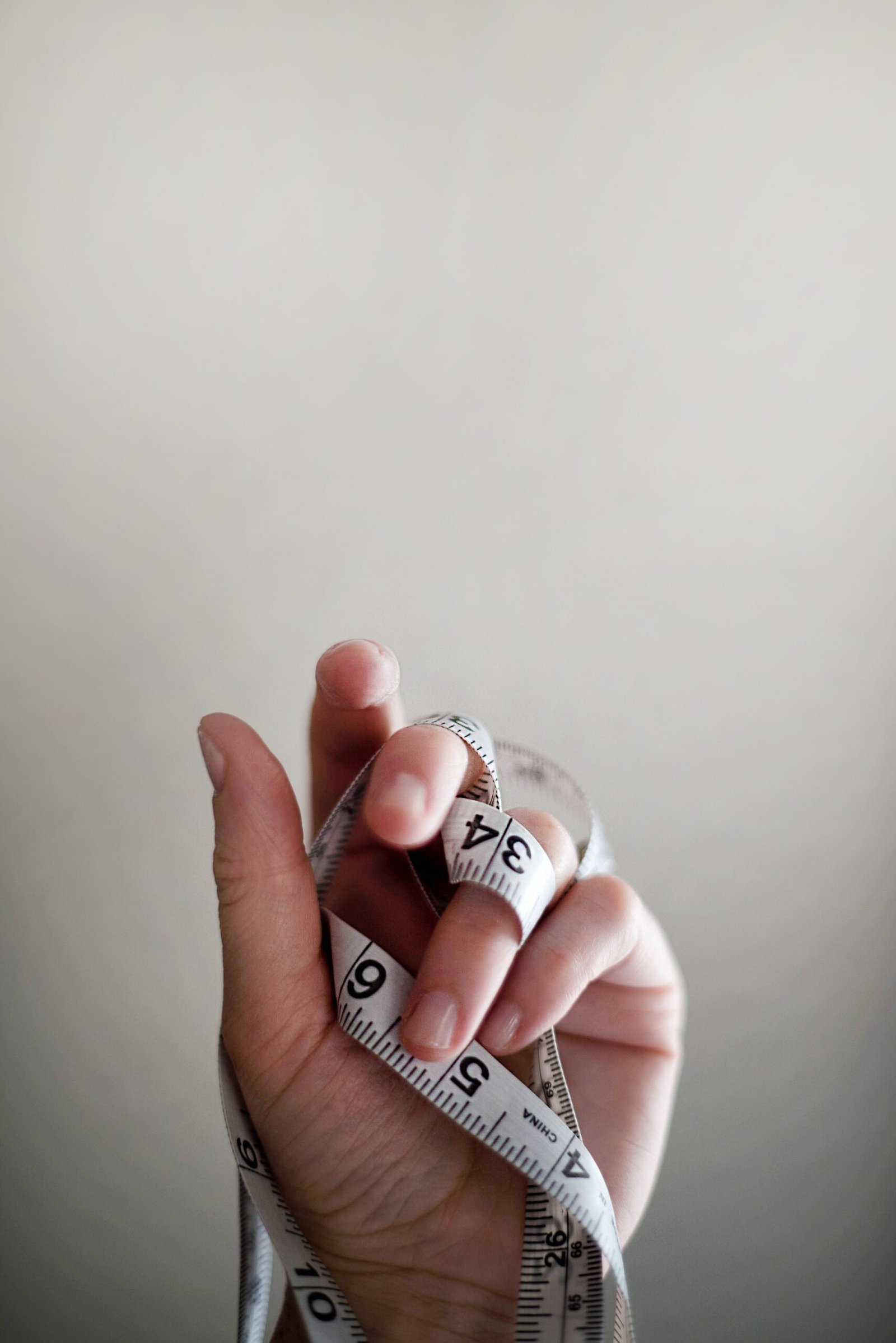In this article, we will explore the intriguing connection between obesity and gout. You might be surprised to learn that there is indeed a relationship between these two seemingly unrelated conditions. By understanding this connection, we can take steps to prevent or manage gout more effectively. So, grab a cup of tea and join us as we delve into the role that obesity plays in gout.

Understanding Gout
Definition of Gout
Gout is a form of inflammatory arthritis that is caused by the buildup of uric acid crystals in the joints. It typically affects the big toe, but can also occur in other joints such as the ankles, knees, wrists, and elbows. Gout attacks are characterized by sudden onset of severe pain, swelling, redness, and tenderness in the affected joint.
Types of Gout
There are two main types of gout: primary and secondary. Primary gout is caused by an overproduction or decreased elimination of uric acid by the body. Secondary gout, on the other hand, occurs as a result of other underlying medical conditions or medications that interfere with the body's ability to excrete uric acid.
Symptoms and Signs of Gout
The symptoms of gout can vary in severity, but they commonly include intense pain, swelling, redness, warmth, and stiffness in the affected joint. Gout attacks often occur suddenly, usually at night, and can last for several days to weeks. In some cases, individuals may also experience fever and fatigue during an acute gout flare-up.
Complications of Gout
If left untreated or poorly managed, gout can lead to several complications. These include the formation of tophi, which are lumps of uric acid crystals that can develop under the skin or in other tissues. Tophi can cause deformities, joint damage, and chronic pain. Gout can also increase the risk of developing kidney stones and kidney disease, as well as contribute to the development of cardiovascular diseases such as hypertension and heart disease.
Defining Obesity
Understanding Obesity
Obesity is a medical condition characterized by the excessive accumulation of body fat. It is typically identified using body mass index (BMI), which is a ratio of weight to height. A BMI of 30 or higher is considered obese. Obesity is a complex condition influenced by various factors, including genetics, lifestyle, and environmental factors.
Causes of Obesity
Obesity can be caused by a combination of genetic, behavioral, and environmental factors. Genetic factors play a role in determining an individual's susceptibility to weight gain and obesity. However, lifestyle choices, such as a sedentary lifestyle, poor dietary habits, and lack of physical activity, also contribute significantly to the development of obesity. Environmental factors, such as access to unhealthy food options and socioeconomic status, can also influence obesity rates.
Health Risks and Complications Associated with Obesity
Obesity is associated with a higher risk of developing various health conditions and complications. These include type 2 diabetes, high blood pressure, heart disease, stroke, certain types of cancer, sleep apnea, and osteoarthritis. Obesity can also have a negative impact on mental health, leading to a higher prevalence of depression, anxiety, and low self-esteem.
The Relationship Between Obesity and Gout
Linkage between Obesity and Gout
There is a strong association between obesity and gout. In fact, obesity is considered one of the major risk factors for the development of gout. Individuals who are obese have a higher likelihood of developing gout compared to individuals with a healthy weight. The excess body weight and fat tissue in obese individuals can contribute to increased uric acid production and impaired uric acid excretion, leading to the development of gout.
Statistical Evidence Supporting the Correlation
Numerous studies have provided statistical evidence supporting the correlation between obesity and gout. According to a study published in the British Medical Journal, each unit increase in BMI was found to be associated with a 6% increased risk of developing gout in men and a 5% increased risk in women. Another study published in the Journal of the American Medical Association found that the prevalence of gout among obese individuals was significantly higher compared to individuals with a normal weight.
Underlying Mechanisms of Gout Occurrence in Obese Individuals
Several underlying mechanisms contribute to the occurrence of gout in obese individuals. Firstly, increased adipose tissue in obesity leads to higher levels of pro-inflammatory substances such as cytokines and adipokines, which can trigger an inflammatory response and promote the development of gout. Secondly, obesity is often associated with insulin resistance, which can further disrupt uric acid metabolism and increase the risk of developing gout. Lastly, obesity can also impair kidney function, leading to decreased uric acid excretion and higher uric acid levels in the body.
The Role of Body Fat in Gout Development
Understanding Body Fat and its role in Metabolism
Body fat, also known as adipose tissue, plays a crucial role in metabolism. It serves as an energy storage site and is involved in the production and secretion of various hormones and inflammatory substances. Adipose tissue is not a passive storage depot but an active endocrine organ that can influence metabolic processes, including those involved in the development of gout.
How Excess Body Fat can Lead to Gout
Excess body fat, particularly abdominal fat, is strongly associated with an increased risk of developing gout. Adipose tissue produces pro-inflammatory substances such as cytokines and adipokines, which can promote inflammation and contribute to the production and crystallization of uric acid. Additionally, adipose tissue can inhibit the excretion of uric acid by the kidneys, leading to higher levels of uric acid in the body and an increased risk of gout development.
Research Studies Supporting the Role of Body Fat in Gout
Numerous research studies have provided evidence supporting the role of body fat in gout development. A study published in the journal Arthritis & Rheumatology found that higher levels of visceral adipose tissue, which is the fat surrounding the internal organs, were associated with a greater risk of gout. Another study published in the journal Obesity Research & Clinical Practice demonstrated that weight loss and reduction in body fat percentage were associated with significant improvements in gout symptoms and frequency of gout attacks.

Insulin Resistance and Gout
Understanding Insulin Resistance
Insulin resistance is a condition in which the body's cells become less responsive to the effects of insulin, a hormone that helps regulate blood sugar levels. This can lead to higher levels of insulin in the blood, as the body produces more insulin to compensate for the decreased response of cells. Insulin resistance is commonly associated with obesity and is a key factor in the development of type 2 diabetes.
Linkage between Insulin Resistance and Obesity
Obesity and insulin resistance are closely linked. Excess body fat, especially visceral fat, releases inflammatory substances that can interfere with the normal functioning of insulin and promote insulin resistance. Additionally, obesity is frequently associated with other risk factors for insulin resistance, such as physical inactivity, poor diet, and genetic predisposition.
Insulin Resistance's Contribution to Gout Development
Insulin resistance can contribute to the development of gout through various mechanisms. Firstly, insulin resistance can impair the kidneys' ability to excrete uric acid, leading to higher levels of uric acid in the body. Secondly, insulin resistance can promote the production of uric acid by increasing the breakdown of purines, substances that contribute to uric acid formation. Lastly, insulin resistance is associated with chronic low-grade inflammation, which can trigger gout attacks and promote the development of tophi.
The Impact of Weight Loss on Gout
Importance of Weight Management in Preventing Gout
Weight loss plays a crucial role in the prevention and management of gout. Losing weight can help reduce the production of uric acid and improve its excretion, thereby lowering uric acid levels in the body. In turn, this can reduce the frequency and severity of gout attacks and prevent the development of complications. Weight management should be an integral part of gout treatment plans, particularly for individuals who are overweight or obese.
Research studies about weight loss and gout
Several research studies have demonstrated the positive impact of weight loss on gout. A study published in the journal JAMA Internal Medicine found that weight loss interventions, including dietary changes and physical activity, resulted in a significant reduction in gout flares. Another study published in Arthritis & Rheumatology showed that weight loss improved serum uric acid levels and reduced the risk of recurrent gout attacks.
How Weight Loss Impacts Gout Symptoms and Flare-Ups
Weight loss can have several beneficial effects on gout symptoms and flare-ups. Firstly, weight loss can lead to a decrease in uric acid production by reducing adipose tissue and its pro-inflammatory substances. Secondly, weight loss can enhance uric acid excretion by improving insulin sensitivity and kidney function. These factors combined can result in a significant reduction in gout attacks, less severe symptoms, and improved overall management of the condition.

Role of Diet and Nutrition in Obesity and Gout
Impact of Diet on Obesity and Gout
Diet plays a critical role in both obesity and gout. An unhealthy diet high in calories, saturated fats, sugars, and refined carbohydrates can contribute to weight gain and the development of obesity. Similarly, certain dietary factors can influence uric acid levels and increase the risk of gout. These include high-purine foods, excessive alcohol consumption, and sugary beverages.
Specific Foods and Drinks Contributing to Obesity and Gout
Certain foods and drinks have been associated with both obesity and gout. These include processed and fast foods, sugary snacks and drinks, fried foods, red meat, organ meats, seafood, and alcoholic beverages. These foods and drinks can contribute to weight gain and increase uric acid levels in the body, promoting the development of both obesity and gout.
Diet Tips for Prevention and Management of Gout
To prevent and manage both obesity and gout, it is important to follow a healthy, balanced diet. This includes consuming a variety of fruits, vegetables, whole grains, lean proteins, and healthy fats. Limiting intake of high-purine foods and reducing alcohol consumption can also help in managing gout. It is important to consult with a healthcare professional or registered dietitian for personalized dietary recommendations based on individual needs, preferences, and medical conditions.
Importance of Physical Activity in Preventing Gout
How Physical Activity Helps in Preventing Obesity
Physical activity plays a crucial role in preventing obesity by promoting energy expenditure, improving insulin sensitivity, and supporting weight management. Regular exercise can help reduce body fat percentage, increase lean muscle mass, and improve overall metabolic health. Physical activity also has numerous other health benefits, including cardiovascular health, mood improvement, and stress reduction.
Link between Physical Activity and Gout
Physical activity is also important in preventing and managing gout. Exercise can help maintain a healthy weight, improve insulin sensitivity, and enhance uric acid excretion. Additionally, physical activity has anti-inflammatory effects that can reduce the frequency and severity of gout attacks. It is important to engage in regular physical activity, including both aerobic exercises and strength training, for optimal prevention and management of both obesity and gout.
Recommended Activities for Obese Individuals to Help Prevent Gout
For obese individuals, it is important to start with low-impact activities that are suitable for their fitness level and joint health. Walking, swimming, cycling, and water aerobics are excellent choices for individuals with obesity, as they are low-impact and provide cardiovascular benefits without putting excessive stress on the joints. Gradually increasing the intensity and duration of physical activity can lead to significant improvements in weight management, insulin sensitivity, and gout prevention.
Understanding the Role of Genetics in Gout and Obesity
Genetic Factors Influencing Obesity
Genetic factors play a significant role in the development of obesity. Studies have identified specific genes and gene variants associated with increased body weight, fat storage, and appetite regulation. However, it is important to note that genetics alone do not determine obesity, as lifestyle factors such as diet and physical activity also play a crucial role in weight management.
Genetic Factors Influencing Gout
Similarly, genetic factors can influence an individual's susceptibility to gout. Certain gene variants can affect the body's ability to metabolize uric acid, leading to elevated levels and an increased risk of gout. Genetic factors can also contribute to the development of other risk factors for gout, such as obesity, insulin resistance, and kidney dysfunction.
Interplay of Genetics in Obesity and Gout
There is an interplay between genetics, obesity, and gout. Genetic factors can influence an individual's predisposition to both conditions, and obesity can further exacerbate the genetic risk for developing gout. Individuals with specific gene variants associated with obesity may be more prone to developing gout when they are overweight or obese. However, it is important to remember that lifestyle factors still play a significant role in the prevention and management of both conditions, regardless of genetic predisposition.
Treatment and Management of Gout in Obese Individuals
Available Treatments for Gout
The treatment of gout involves a combination of medications and lifestyle modifications. Medications commonly used for gout include nonsteroidal anti-inflammatory drugs (NSAIDs), colchicine, and corticosteroids, which help reduce pain and inflammation during gout attacks. In some cases, medications such as allopurinol or febuxostat may be prescribed to lower uric acid levels and prevent future gout attacks.
Challenges in Managing Gout in Obese Individuals
Managing gout in obese individuals can present certain challenges. The effectiveness of medications may be reduced in individuals with obesity, as higher body weight can affect drug absorption and metabolism. Difficulties in accurate diagnosis and monitoring of gout symptoms may also arise due to the physical limitations imposed by obesity. Additionally, addressing the underlying causes of obesity, such as promoting weight loss and managing comorbidities, is crucial for long-term gout management.
Lifestyle Changes Recommended for Obese Individuals with Gout
Lifestyle changes are integral to the management of gout in obese individuals. Weight loss, achieved through a combination of dietary modifications and regular physical activity, is a key component of gout management. Adopting a low-purine diet, reducing alcohol consumption, and staying hydrated are also important dietary considerations. Moreover, maintaining a healthy lifestyle that includes stress management, adequate sleep, and adherence to prescribed medications can contribute to the effective management of gout in obese individuals.
By understanding the role of obesity in gout development and implementing appropriate lifestyle changes, individuals can effectively reduce the risk of gout, manage symptoms, and improve overall health and well-being. It is important to consult with a healthcare professional for personalized advice and guidance in the prevention and management of obesity and gout.
